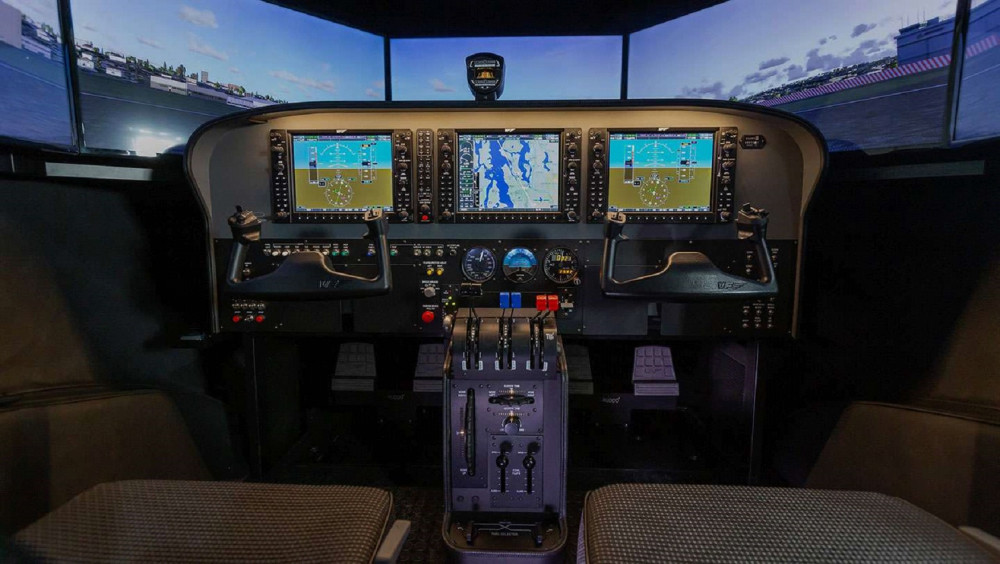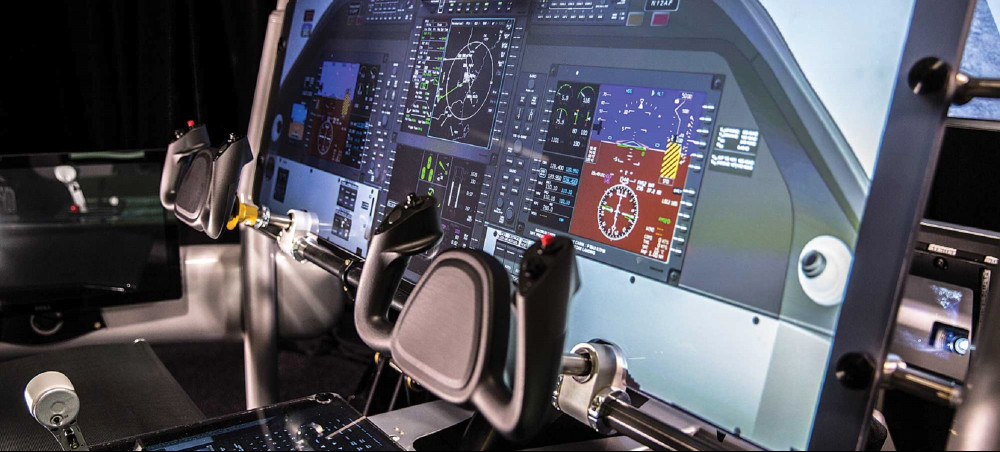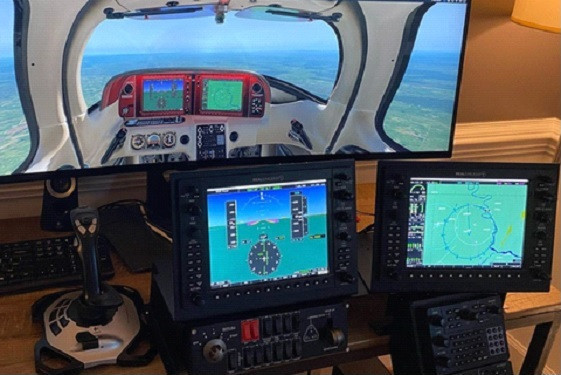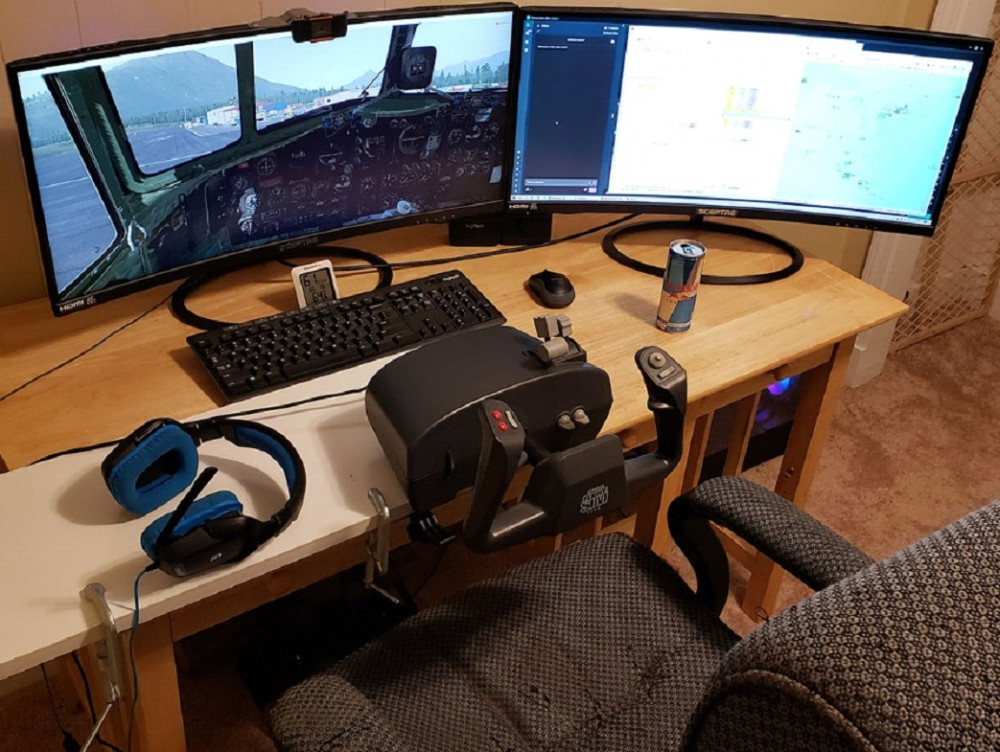Home Flight Simulator Training – Design Your Own Virtual World with Our Simulation Engine:

A home Flight Simulator can be a terrific purchase for aviation enthusiasts, aspiring pilots, and seasoned pilots alike. When used properly, a simulator aids in the development of maneuvering proficiency, familiarity with aircraft controls and instruments, and, if you have a certified device, the logging of instrument time or currency towards your license and ratings. But like with most things in aviation, costs mount if you aren’t strategic and realistic about your objectives and what you need to do to reach them. Here are some things to consider before beginning a home flying simulation.
Software:
Starting with the simulation engine is essential if you’re creating a home simulator from scratch (assuming you already have a capable laptop or desktop computer). Your home simulator can be powered by a number of practical choices. These include gaming programs that cater to particular markets. For example, the popular software program Digital Combat Simulator World (DCS World) is used by fans of military video games. Prepar3D®, X-Plane, and Microsoft Flight Simulator 2020, on the other hand, are well-liked alternatives for pilots and aviation enthusiasts who require flexible and accurate simulations of general and commercial aviation.
Are You Ready To Start Training At Home?

You’re not alone if you’ve considered adopting home-based flight simulation to hone your abilities, maintain competency, or perhaps simply for fun.
In a poll we did, 24% of pilots reported already utilizing simulators, and 38% said they do not currently use home-based simulators for training but would like to. Over 11,000 pilots participated. If you fall into one of these categories, taking this course will help you move to sim training more smoothly and effectively.
This Step-By-Step Guide Makes It Easier:
A Flight Simulator’s setup and use can be intimidating. For individuals who want to begin training at home, we prepared this course to make the process simpler. With clear video demonstrations, we go over the essentials.
Build proficiency with our recommended training flights:
Our aim is straightforward: after watching these videos, you should have your flight simulator configured to your liking and be aware of how to utilize it to develop the necessary abilities. Additionally, you’ll benefit personally by saving a ton of time, money, and frustration.
Build Your Own Sim, Or Buy One Ready To Go:

You will start using this video course as soon as feasible. We provide everything you need, whether you want to create your own sim or purchase one that is already set up.
Create Your Own: With our detailed video tutorials, you can create a simulator on a budget if you enjoy dealing with computers. We’ll assist you in determining whether your present PC can operate X-Plane or if a new PC is required. In either case, if you adhere to the simple methods in the tutorials, you will end up with a finished sim that is ready for usage.
Purchase a Complete System: If you’d prefer to purchase a sim that is completely configured and ready to use, we also have you covered. Although it costs a little more, this choice minimizes irritation for non-technical people and is typically quicker. We have a close working relationship with X-Force PC, a company that specializes in creating personal X-Plane sims. They will build and ship you a ready-to-use sim if you let them know what you need and you’re spending limit.
X-Plane 11 Or Microsoft Flight Simulator?
Pilots are curious about the best option for training. Microsoft Flight Simulator or X-Plane.
Although the new Microsoft Flight Simulator 2020 is fantastic software, it has a few flaws that prevent us from endorsing it as a serious tool for developing pilot ability. We’ll discuss whether MSFS 2020 is appropriate and why X-Plane 11 is superior for the kinds of training that the majority of pilots seek.
The use of X-Plane for realistic training is the course’s main emphasis. On settings and configurations that optimize this simulator for pilots, we’ll offer thorough instructions.
Because of its power and realism, X-Plane 11 is incredible. It continues to be, in our opinion, the best tool for training at home.
X-Plane 11:
X-Plane 11 is a desirable alternative for people who utilize flight simulators. X-Plane 11 costs $59.99 and is renowned for its flight models, visuals, and fluid frame rate. It may be purchased on DVD or through a digital download. A professional upgrade is also available from Laminar Research to support commercial use and FAA certification. It supports a variety of aircraft models, scenery, and plugins regardless of the version you have.
Microsoft Flight Simulator:
Since its introduction in 2020, the new Microsoft Flight Simulator’s features have been extensively discussed online. The graphics stand out the most among them. You may travel a realistic 3D world made with aerial photographs from Bing maps using Microsoft Flight Simulator 2020. Accordingly, in order to run Microsoft Flight Simulator at its optimal settings, you need a strong PC or an Xbox gaming system. The price for the standard edition is $59.99.
Any one of these simulation engines would make a practical foundation for your home simulator. The majority of the equipment and extra software you buy will work with Microsoft Flight Simulator, X-Plane, and Prepar3D.
Practice Radio Work On Your Sim:

If you want to crank up the realism a few notches, we’ll show you how to get set up and running with a service that provides fully trained, professional, human Air Traffic Control through your simulator.
Flying in this network lets you practice real-world radio communications from ramp-to-ramp, both VFR and IFR procedures. It’s the magic ingredient that realistically increases workload and brings sim training into the real world.
Conclusion:
Hope you’ve enjoyed reading this article. What’s your experience with home flight simulator training? Feel free to share it in comments below and I’m sure that many others will benefit from reading it.
Also, you’re always welcome to ask your questions or share your opinions in comments below and I would be more than happy to read and answer them.
Thank you and see you soon in the next article.

I always admired the capabilities of a flight simulator program. Their realistic graphics and gameplay make it for an entertaining, learning acceptance of how flying actually is. I belive that simulator programs now adays are improving beyond just the graphic aspect though. Would VR be the next addition towards this simulator program?
Good article!
Thanks for the feedback. You can get a VR headset so you can take your flying experience to the next level. First you need to build a cockpit at home then comes the training. Even a simple cockpit will help you improve Flight Simulator Experience. The graphics needs to be a high standard to have better flying experience.
This is amazing if you’re interested in aviation. Like Jeremy says VR would be the next step for the ultimate flying experience. But even now the gameplay and realistic aesthetics encourage an enjoyable appreciation of how flying truly is. This is such a helpful article if you love to get started. Could everyone just install this at home?
Vr headset is good option for those who would like to take flight simulator experience to the next level. It is possible to install a cockpit at home provided you have the right tools and hardware. You also need software compatible with flight simulator.
Flight simulators have advanced so much since the first ones were launched. The graphics are incredibly realistic and does give one the feeling and experience that you are in an actual cockpit. It can be quite scary when you realise you are about to crash the plane if you do not pay attention.
My son always talked about being a helicopter pilot, but after using a flight simulator he decided that studying aeronautical engineering was better for him. He loves using the simulator for a thrill and to improve his skills.
Thanks for the feedback. Flying a virtual cockpit is almost like real cockpit.